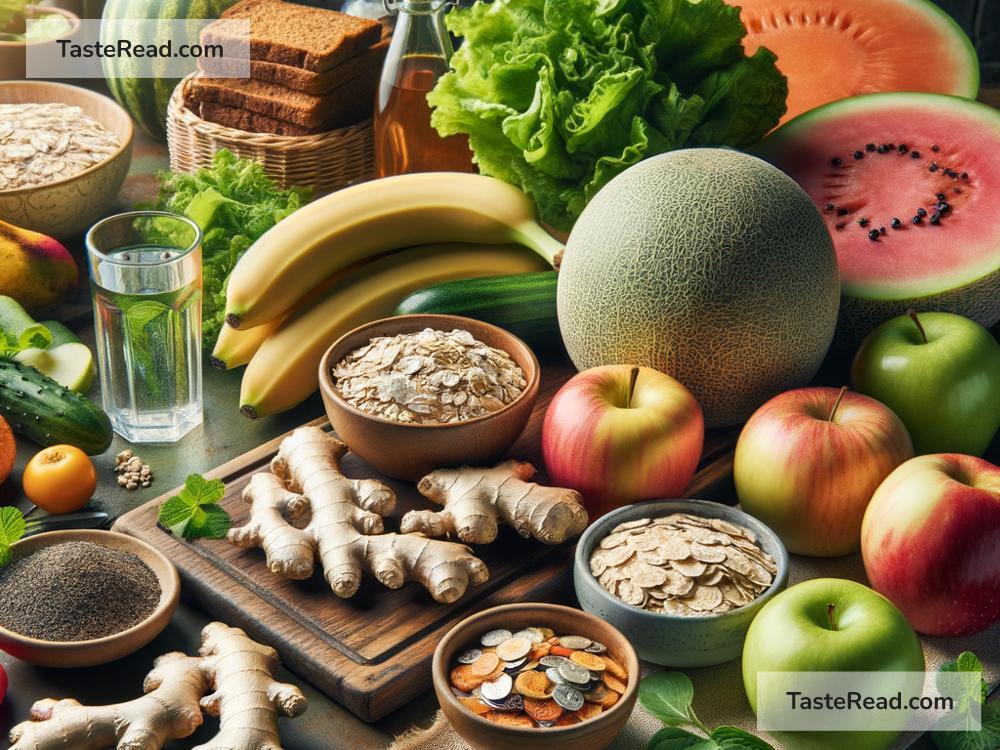Foods That Reduce the Risk of Acid Reflux
Acid reflux, also known as gastroesophageal reflux disease (GERD), happens when stomach acid flows back into your esophagus, causing uncomfortable symptoms like heartburn, chest pain, or a sore throat. While medications can help treat acid reflux, changing your diet can also make a big difference. Certain foods can soothe symptoms and reduce the risk of acid reflux. In this article, we’ll explore the top foods that are gentle on your stomach and promote digestive health.
Understanding Acid Reflux and Diet
Acid reflux often occurs when the lower esophageal sphincter (LES), a muscle that acts as a gate between your stomach and esophagus, doesn’t close properly. When the LES becomes weak or relaxed, stomach acid can leak upward into the esophagus, triggering discomfort.
Foods play a key role in managing acid reflux because some can ease digestion and reduce inflammation, while others can aggravate symptoms. Knowing what to eat and what to avoid helps many people keep acid reflux at bay.
Top Foods That Reduce Acid Reflux
Here are some foods that are less likely to trigger acid reflux and may even help reduce symptoms:
1. Oatmeal
Oatmeal is a great breakfast option if you’re trying to prevent acid reflux. It’s low in fat and rich in fiber, which helps digestion and keeps you feeling full longer. Fiber also supports gut health by reducing inflammation and preventing stomach acid from creeping up into the esophagus.
You can enjoy oatmeal with non-acidic toppings like bananas, almond milk, or honey to create a soothing meal.
2. Ginger
Ginger is known for its anti-inflammatory properties, which can calm an irritated stomach. It supports digestion and is considered one of the best natural remedies for acid reflux.
You can use fresh ginger to make tea or add it to soups and stir-fry dishes. Just be careful not to overuse ginger since too much can sometimes cause stomach discomfort.
3. Bananas
Bananas are a mild, low-acid fruit that’s safe for most people dealing with acid reflux. They’re an excellent option because they help coat the esophagus and reduce irritation. Bananas also contain potassium, which supports healthy digestion and can help maintain a balance in stomach acid levels.
If bananas aren’t your favorite, you can also try low-acid fruits like melons or apples (preferably without their skins).
4. Leafy Greens
Vegetables like spinach, kale, broccoli, and lettuce are gentle on the stomach and packed with nutrients. They are naturally low in fat and sugar, making them excellent choices for anyone trying to avoid acid reflux triggers.
These greens can be steamed or lightly sautéed to create a side dish or added to salads for a healthy meal.
5. Whole-Grain Foods
Whole-grain breads, rice, and pasta are less likely to trigger acid reflux compared to refined or processed carbs. They’re rich in fiber and take longer to digest, which can help prevent overeating—a common cause of acid reflux.
Stick to plain options and avoid creamy sauces or spicy seasonings that could worsen symptoms.
6. Non-Citrus Fruits
Citrus fruits like oranges, lemons, and grapefruits are acidic and can trigger reflux symptoms. Instead, opt for non-citrus fruits like melons (cantaloupe, watermelon, honeydew), pears, or berries. These fruits are gentle on your stomach and offer a refreshing way to enjoy snacks without the risk of heartburn.
7. Almond Milk
Dairy products like cow’s milk are common acid reflux triggers for some people, but almond milk is often a safer alternative. It’s alkaline and can help neutralize acid in the stomach, reducing irritation in the esophagus.
You can use almond milk in smoothies, desserts, or even drink it plain as a soothing beverage.
8. Lean Proteins
High-fat, greasy foods like fried chicken or bacon are associated with increased acid reflux symptoms. Instead, choose lean proteins like skinless chicken, turkey, fish, or plant-based protein sources such as beans and lentils. These options digest more easily and don’t put as much pressure on your digestive system.
Avoid frying your protein; bake, grill, or steam them instead for a healthier preparation.
9. Herbal Teas
Certain herbal teas, like chamomile or licorice root tea, are known to soothe the esophagus and stomach lining. They can help promote relaxation in the digestive tract and reduce acidity levels.
Avoid caffeine-heavy beverages, like coffee or black tea, as they may aggravate acid reflux symptoms.
10. Plain Yogurt
While some dairy products can cause acid reflux, plain yogurt with probiotics is an exception for many people. Probiotics help maintain healthy gut bacteria and support digestion. Adding a touch of honey or fresh fruit can make it even more soothing.
Opt for unsweetened and non-fat yogurt varieties to avoid triggering any symptoms.
Final Tips for Managing Acid Reflux
In addition to eating the right foods, here are some helpful tips:
- Eat smaller meals: Large portions can put pressure on the LES, increasing the risk of acid reflux.
- Stay upright: After eating, avoid lying down for at least two hours. This helps prevent stomach acid from rising.
- Avoid common triggers: Spicy foods, caffeine, chocolate, peppermint, and alcohol are notorious for worsening acid reflux.
Conclusion
If you suffer from acid reflux, adjusting your diet is a powerful way to reduce symptoms and feel better. Foods like oatmeal, bananas, ginger, and leafy greens can help soothe your digestive system and minimize discomfort. Pair these foods with mindful eating habits to keep acid reflux at bay and enjoy a healthier, more comfortable life.


